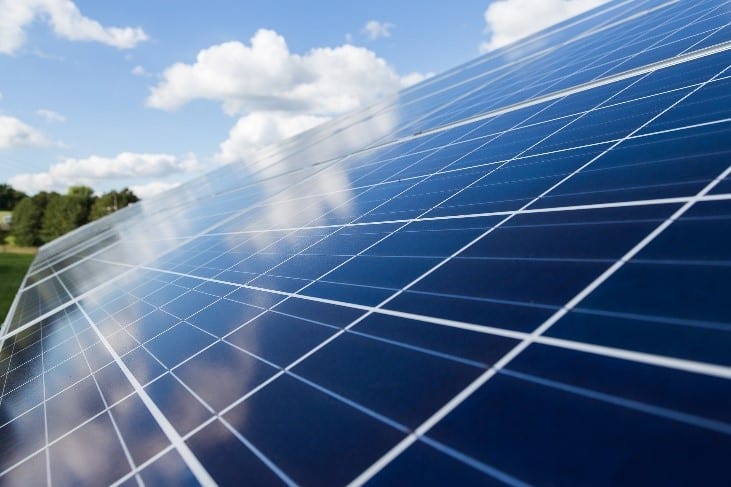Accsense Electrocorder Kit for Solar Energy Audit
 As summer begins, photovoltaic, PV, panel installers, and servicepersons can realize significant benefits from using solar energy monitoring to prove to clients that the promised savings are really delivered. Alternatively, if you’re the owner of one of these systems and you need to prove reduced draw from the grid to qualify for grants or for data to give your financiers, a solar energy data logger is a low-cost way to record your system’s delivered power and compare it against what was promised at installation
As summer begins, photovoltaic, PV, panel installers, and servicepersons can realize significant benefits from using solar energy monitoring to prove to clients that the promised savings are really delivered. Alternatively, if you’re the owner of one of these systems and you need to prove reduced draw from the grid to qualify for grants or for data to give your financiers, a solar energy data logger is a low-cost way to record your system’s delivered power and compare it against what was promised at installation
Using a data logger that captures power output, you can perform your own solar energy audit to help your facility qualify for a rebate program or to keep tabs on the performance of your PV array. Our Accsense Electrocorder product family has an ideal solution containing everything you need to record and analyze this data—the PV-3 Solar Data Logger. Used by installers, homeowners, and renewable energy companies to check their photovoltaic installations, these devices measure and record Solar Irradiance and DC Voltage/DC Current generated by the array, allowing users to check the efficiencies of their solar panels over time. For detailed analysis, Electrosoft software is included with the datalogger and enables you to input the surface area of the PV array along with the panel efficiency, and thus calculate and compare the actual solar energy input versus the actual output.
Recording Solar Energy:
To monitor DC Current/Voltage produced by the solar panel, the PV-3 has one DC voltage input channel, one DC current input channel plus a pyranometer that records incoming solar irradiation up to 1,500W/m2 (watts per square meter). Specifically designed for logging data from PV installations for performance assessment, the data logger compares the solar energy with the DC electrical output of the system. The datalogger records PV systems with an output of up to 300VDCand up to 100ADC. The clamp-on current sensor has two ranges +/-10A and +/-100A.
When recording, the data logger performs a measurement 800 times a second and then stores the average, minimum, and maximum of the voltage, current, and irradiance over the selected storage interval – from 1 sec to 60 min. All the data is tagged with a time and date stamp.
The data logger is rated at IP65 and can operate from -10C to +40C. It is powered by an external 12VDC supply and has an internal battery backup to allow it to continue to operate up to 1 day in the event of a temporary power interruption. Data is stored in the logger’s non-volatile memory with a capacity of 32,000 readings per channel providing continuous recording for extended periods. Setting up the solar audit kit is easy even for semi-technical staff. Simply connect it to a PC via USB and using the Electrosoft program provided with the logger, users just input the recording configuration such as sample rate and recording mode plus any other site information location’s details. The unit can then be disconnected from the PC and attached to the PV array to start logging.
Solar Energy Monitoring
A solar photovoltaic (PV) installation is an energy conversion system that takes solar radiation and converts it first to DC voltage and current. This can be used to charge a battery or converted to AC voltage and current using its inverter. This energy can then be used on site and/or exported to the power grid. The main efficiencies (or inefficiencies) in the overall system are the efficiency of the PV cells–typically 15% to 18%–and the inverter–typically better than 95%. Overall system efficiencies vary from 14% to 17%. Inverter efficiencies usually don’t vary much over time but can be adversely affected by ambient temperature, so positioning them in cool places can help. The main concern is the efficiency of the PV cells which can also vary with temperature and poor optical transmission (dirt, etc.) The panels can also have individual cell failures.
However, these PV cell inefficiencies are very difficult to detect since the energy output of the system can fluctuate from day to day, depending on cloud cover, sun angle (changing seasonally), ambient temperature, and shading (seasonal). Metrological data and records allow you to predict the output of a solar system, but once the system is in place and you’ve begun noticing performance issues, a data logger allows you to actually track the efficiencies of your system.
The advantage of Accsense Electrocorder products over competitors is that these data loggers constantly sample the inputs. Many other products only record ‘snapshots’ of what is going on and can miss 99.9% of the data that is critical to your overall analysis. Meanwhile, at the end of each averaging period, the Accsense Electrocorder logger saves 3 quantities for each channel: the average; the Max, which is the highest value during the period, and the Min, the lowest value.
For more information on solar energy monitoring, or to find the ideal solution for your application-specific needs, contact a CAS Data Logger Applications Specialist at (800) 956-4437 or request more information.

